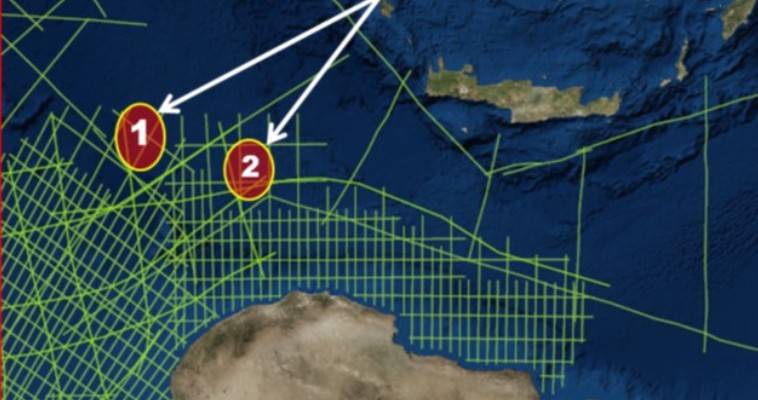Ilias Konofagos: The Turks caught wind of the oil faster than the Greeks
10/06/2020
On April 23, 2019, EU High Representative for Foreign Affairs and Security Policy Federica Mogherini proposed to EU member states the recognition of the Libyan Government of National Accord as the only legitimate representative of the Libyan state.
Despite France’s objections, Mogherini’s proposal was approved thanks to the rubber stamp of the Greek government, although Turkey’s systematic contacts with the Tripoli government for the preparation of a bilateral international continental shelf sharing agreement between the two states, already bypassing Crete, were already known..
The non-use of the Greek veto in the EU Council for the non-recognition of the government of Tripoli was a very important historical failure which today led Greece to unforeseen adventures in the field of energy.
This political failure, in essence, served Turkey’s energy goals:
Cyprus and Greece should not be able to develop their undersea hydrocarbon extraction capabilities from a practical and economic point of view. This would allow Turkey to acquire rights and access to the submarine energy wealth of Libya through, or rather despite of, Crete under a cloak of legitimacy.
But if one looks carefully at events, in the last three years, related to the energy sector, in the Eastern Mediterranean. On June 2, 2020, Turkey announced the granting of mining rights to its state-owned oil company TPAO for 24 maritime plots located within the Greek continental shelf south of Rhodes, Karpathos, and southeast of Crete. These plots include a large part of the Herodotus basin nominally belonging to Cyprus and Greece, which, in terms of oil, is considered by experts to be an extremely promising area for the presence of important hydrocarbon deposits (Fig. 1).
This Turkish action, in our opinion, is not a primary pursuit of Turkish policy, as in the area of published lots the sea depth is almost in all cases of the order of 3,000 meters while at the same time, within this area, no targets for natural gas deposits, of high interest, have been reported or mapped. It is estimated that it will take at least 20 years to evaluate, certify and exploit deposits there.
On the contrary, according to the information available, we should consider the systematic effort to acquire exploration rights and exploit hydrocarbon deposits through a third country southwest of the Peloponnese between Libya and Crete, in accordance with international industry practices, as one of Turkey’s primary goals.
Zohr is the target
The reasons for the recent Turkish pursuits in the region off Crete, concerning already mapped targets of “Zohr” type deposits in the wider region, are extremely easy to understand, based on the map (Fig. 2).
From the Gulf of Kyparissia to Ierapetra (Fig. 2), 28 targets of “Zohr” type deposits have been recorded offshore by the Hellenic Hydrocarbon Management Company (EDEY SA). Most of them are larger in size than the already discovered “Zohr” field, which covers an area of 100 square kilometers (100 km2) and contains available gas reserves of one trillion cubic meters (1 Tcm).
Considering a 25% chance of finding a natural gas field in the area (ie one in 4 drillings reveals an exploitable deposit), a minimum of 3 trillion cubic meters of gas could be obtained within a 25-year period for the benefit of the Greek economy. The value of this amount today comes to 200 billion euros.
At the same time, we can note that two targets of “Zohr type” deposits of global interest with an area to the order of 6,000 km2 & 3,500 km2 respectively, southwest of Crete, on the Libyan side, have been mapped by American companies.
The importance of deposits in Greece-Libya
In 2003, I had the good fortune, as General Manager of ELPE (Hellenic Petroleum), through the authorization of the Board of Directors of ELPE to sign contracts for the granting of mining rights to six land research plots in Libya, one of which had already been discovered. At the same time, ELPE negotiated through the author the granting of rights for exploration and exploitation of deposits in a offshore area northwest of the Gulf of Sirte between Libya and Crete.
Moreover, from 2003 until today, there has been a systematic scientific collaboration between the author and executives of the Libyan state firm NOC, which is based in Benghazi. It should be noted that – despite the civil war in Libya – from a scientific point of view, the Libyan state company is still operating smoothly with an international presence at its executives’ conferences.
Based on the above, it should be noted that only three years ago the geophysical research company SPECTRUM in collaboration with the geophysical research firm I.O.N. based in Houston, USA, processed and published the results of recent seismic mapping of hydrocarbon targets between Libya and Crete (Fig. 3).
SPECTRUM presented, in London, the results of this evaluation entitled “A sight for Zohr-eyes – the search for the next North African carbonate super-giant.”. In its presentation, it noted that southwest of Crete, limestone reefs similar to those found around the underwater Eratosthenes ridge south of Cyprus have been identified.
The first reef bears exceptional resemblance to the corresponding carbonate reef of the “Zohr” deposit between Cyprus and Egypt, which is known to be 10 km long (km) and has 800 billion cubic meters of natural gas (m3). Also, this first Libyan reef target (see Fig. 4) is only five kilometers from the Greek maritime borders (as defined by the Libyan side).
SPECTRUM found with obvious surprise that this giant “Zohr” type target is 100 km long and its volume appears to be many times that of the “Zohr” deposit. Just 60 kilometers to the east there is a second target (see Fig. 4, right) on the Libyan side with an 80-kilometer-long deposit, which is perhaps 8 times larger than the Zohr.
Considering that the largest natural gas field in the world is “North Dome” of Qatar with an area of 2,800 km2 and gas reserves of 36 trillion. cubic meters (38 Tcm), with a total gross value exceeding 5 trillion. dollars, it is obvious that mapped targets of deposits southwest of Crete located within the Greek continental shelf are of the highest energy importance.
For our part, we should mention that according to recent geological estimates, such reef targets are usually repeated in the Eastern Mediterranean and a corresponding existence of Greek giant targets southwest of Crete should be expected at great sea depths (ultradeepep) within the Greek continental shelf (Fig.2, targets of deposits with question marks due to lack of seismic data) at sea depths of 3,000 meters.
The sea depth is not an obstacle to the exploitation of the deposits – since these are huge deposits – and given that a Greek-owned drilling rig recently drilled a 3,600-meter-deep offshore well outside Greece.
Figure 5 schematically shows the potential for recurrence of targets on reefs, from the Greek side, as well. These from a geological point of view touch the Mediterranean Ridge to the north. It is clear that such giant “Zohr-type” targets can only be the investment target of extremely robust and very large oil companies. If future research finally proves the existence of gas deposits of this size, it is clear that their content could supply Europe with natural gas for many decades (see Fig. 3).
The Turks are many steps ahead
Based on the above, we can very easily understand why Turkey recently proceeded with its own drilling rigs to conduct illegal drilling in the Eastern Mediterranean while signing extreme bilateral agreements to share the continental shelf between Turkey and Libya, noting that Crete is not entitled to a continental shelf, and therefore not entitled to any wealth thereof.
Turkey finds that it is the only way to gain direct rights within the Greek continental shelf and the Libyan continental shelf. That is why it is preparing to acquire rights with a mantle of legality through concessions from a third country (ie through Libya). According to all indications and information available, the Libyan side is considering alternative solutions for declaring free research offshore areas for concession to third parties (eg TRAO) as well as those shown on the map in Fig.7.
It should also be noted that despite the fact that Turkey already has three operationally active drilling rigs, Greece has not taken care to carry out any offshore drilling within the Greek EEZ for 34 years. For about half a century, Greece has been living and maintaining its edconomy exclusively on imported hydrocarbon mineral wealth, despite the fact that for many years everyone has known that there are significant prospects for the creation of domestic mineral wealth from natural gas fields.
According to a recent European Commission report, Greece has the seventh highest energy dependence in the EU at 28 (73.6%) and the third highest in southeastern Europe after Cyprus (96.2%) and Turkey (74.9%) . The only thing this dependence does is to create significant wealth and jobs for foreign countries. There is no doubt that the current situation requires the Greek government to prioritize the creation of domestic mineral wealth – especially by exploiting gas fields – by attracting investment in mineral wealth mining.
Concluding, let us add that in the post-coronavirus economic crisis, Greece has a unique opportunity to emerge from the crisis, which in no way should be lost. This opportunity focuses on focusing, as soon as possible, on the mineral wealth of hydrocarbon deposits within the Greek EEZ and especially of Greek the wealth of hydrocarbon deposits between Libya and Crete.












